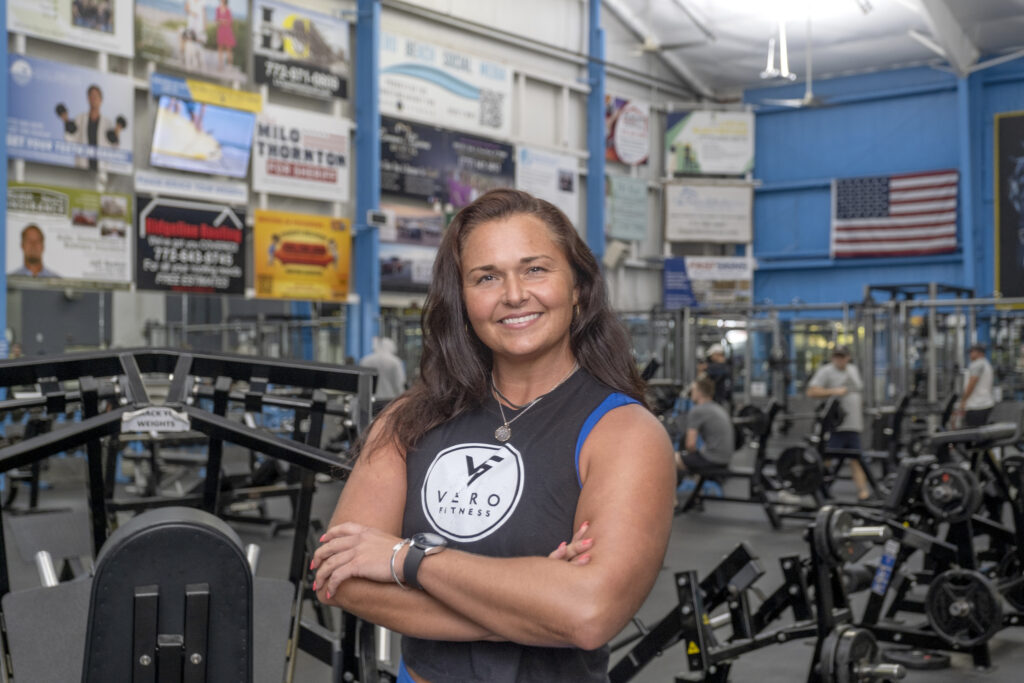All of us can benefit from focused training that includes both aerobic and anaerobic activities – but what’s the difference between the two?
Kaylan Keathley, ISSA Master Trainer and NASM Certified Personal Trainer at Vero Fitness, explains, “Aerobic training increases your capacity to utilize oxygen and burn fatty acids during exercise through what is known as the oxidative energy pathway.
“Aerobic training can maximize your body’s oxidative capacity within muscle fibers, increase your aerobic capacity depending on your genetics, increase utilization and mobilization of fat, increase blood flow, and increase development of your slow twitch muscles fibers, among others.”
She adds, “Anaerobic activities, as the name suggests, require no oxygen for energy.” The main purpose of anaerobic training is to build muscle mass.
In simple terms, Keathley says to think of aerobic activities as endurance activities that raise your rate of respiration and last more than two minutes while anaerobic activities involve short bursts of intense power.
Web MD gives examples of aerobic exercise:
- Running or jogging
- Biking
- Swimming
- Walking
- Hiking
- Rollerblading
- Cardio machines, like a treadmill or elliptical machine
- Stair climbing
- Rowing
- Dancing
- Skiing
- Jumping rope
- Playing sports like tennis, pickleball, basketball, soccer, hockey and volleyball.
Examples of anaerobic exercises include:
- High-intensity interval training (HIIT)
- Weightlifting
- Calisthenics, such as pushups and squats
- Plyometrics (jump training)
Aerobic activity tends to dominate exercise guidelines for overall health and fitness. The U.S. Department of Health and Human Services’ Physical Activity Guidelines for Americans specifies 150 minutes of moderate-intensity aerobic exercise as the minimum amount all adults should aim for every week.
But that doesn’t mean you should forget about anaerobic exercise. This form of exercise offers unique health benefits, making it an essential component of a well-rounded fitness routine.
Medical News Today explains that the two types of exercise are distinguished by how the body uses stored energy; the intensity of the exercise; and the length of time a person can maintain the exercise.
Aerobic exercise helps increase endurance, whereas anaerobic exercise helps increase muscle mass and strength.
Both types of exercise strengthen the heart muscle, boost circulation, increase metabolism and aid in weight management.
Keathley says, “Capacity and efficiency of aerobic and anaerobic activities and the physiological benefits of these activities is based more on your genetics than age, gender, or even current fitness level.
“Understanding the blueprint of how your specific body was designed can help massively increase your training potential and results while minimizing frustration and confusion.”
The benefits of aerobic exercise include:
- Reduced risk of chronic illness: Routine exercise, including aerobics, reduces your risk of cardiovascular diseases such as heart disease, stroke and high blood pressure. It also lowers your risk of chronic diseases like type 2 diabetes and some cancers.
- Less stress: A heart-pumping cardio routine can also help lower your stress levels.
- Weight management: Regular physical activity, including aerobics, can help you maintain a healthy body weight.
- Better sleep: People who exercise regularly tend to fall asleep faster and sleep more soundly. And research shows that regular aerobic activity can improve sleep quality in people with insomnia symptoms.
These benefits apply to anaerobic exercise, as well, and there are also others that are unique to anaerobic: - Better VO2 max: VO2 max is the maximum amount of oxygen your body uses for energy during intense exercise. It measures your cardiorespiratory fitness, which is essential for endurance. And studies show that HIIT (high intensity interval training) may be better at improving VO2 max than moderate, steady-state exercise.
- Shorter workouts: Ongoing research suggests that HIIT is an effective way to boost your health in a short amount of time. One study found that as little as three weekly HIIT sessions (10 minutes or less per session) may improve aerobic capacity and endurance.
- More muscle power: For people looking to make athletic improvements – like swinging a bat harder or running faster – anaerobic exercise can help. Generally, anaerobic training increases muscle power for athletes.
Keathley suggests that if you’re just starting out – or want to maximize your exercise program – working with a professional is beneficial. Among other things, you’ll get an initial fitness assessment to determine where and what your “weak spots” are and how training should be programmed to “bridge the gaps.”
“There are thousands of fantastic exercises, sports and workout regimes today. The trick is pairing the correct exercises with the body you have with the goals you hope to achieve,” she says.
Kaylyn Keathley is ISSA Master Trainer, NASM Certified Personal Trainer and executive director of Vero Fitness’ IDLife Program. She has worked full time as a personal trainer since 2013. She also offers DNA-based training, nutrition, and supplementation coaching. Vero Fitness is located at 1060 6th Ave. The phone number is 772-567-1400.

